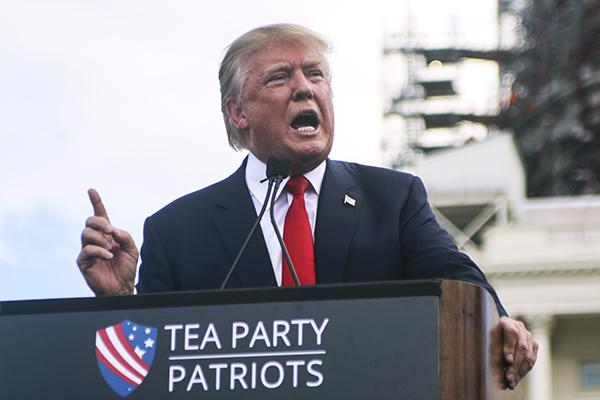Tucked away in the Media and Public Affairs building, two GW researchers are combing through the Internet for tweets about Donald Trump’s hair and Hillary Clinton’s emails.
Lara Brown and Michael Cornfield, associate professors in the Graduate School of Political Management, started the PEORIA Project this summer, which measures how members of the public discuss 2016 presidential candidates and how candidates’ messages affect mainstream and social media. Their third report came out last week, and the pair will continue to publish reports throughout the campaign cycle.
Last week’s report revealed Donald Trump’s continued social media dominance, a rise in Carly Fiorina’s notoriety and a sharp decline in Scott Walker’s campaign’s presence. A report earlier in the summer also showed Trump’s control of social media, including a spike in references to immigration after he joined the race.
Brown said in an interview that the researchers decided to look into how the media can influence campaigns and to understand how campaigners and voters use media.
“We wanted to try to understand how much that matters and how much the candidates are able to get their message across in a cluttered media environment that exists,” Brown said. “So how they’re able to craft that message, stay on message and put forward messages.”
Brown and Cornfield rate candidates on a scale of one to 11 based on factors like “mentions” on social media.
“What we are really again trying to study is more how the candidate, how their rhetoric and how their messages resonate among the public, within the media and whether or not those messages are echoed kind of across the election landscape,” Brown said.
Brown has researched the American presidency and political parties, and wrote a book about the subjects recently. Cornfield, the other researcher, has researched and written about campaign strategies, especially in the digital age.
By the end of the election cycle, Brown said she hopes they can use polling and voting data to show how media attention drives voters. She said the goal is to have a theory for media in presidential campaigns by 2018.
Brown and Cornfield have been working with Zignal Labs, a company that monitors and analyzes media. Brown said the process starts with Zignal collecting digital and print messaging from candidates through broadcast news, Twitter, Facebook, newspapers and blogs. The researchers can then sift through all of the words that are written by and about candidates.
Brown said they hope to publish 30 reports by the time the election comes around next fall, with topics ranging from events and debates to party conventions. The first report introduced how the project works and where candidates ranked based on media influence, and the second report analyzed Trump. They chose topics based on trends they saw in media during the time period the report covered.
Brown said their “aim is to make this an intellectually robust research endeavor” by including other GSPM faculty and students in their research. She said other faculty members have connected Brown and Cornfield with researchers they know who have studied similar topics.
While PEORIA is following only the 2016 election, Cornfield, the other researcher leading the project, said he does not “think media is more important in this race than ever before,” but now they are able to test whether they are more easily than before because of social media.
“Now that words can be analyzed as data, I thought that we could recognize patterns of influence along the long road of a presidential campaign,” Cornfield said.







